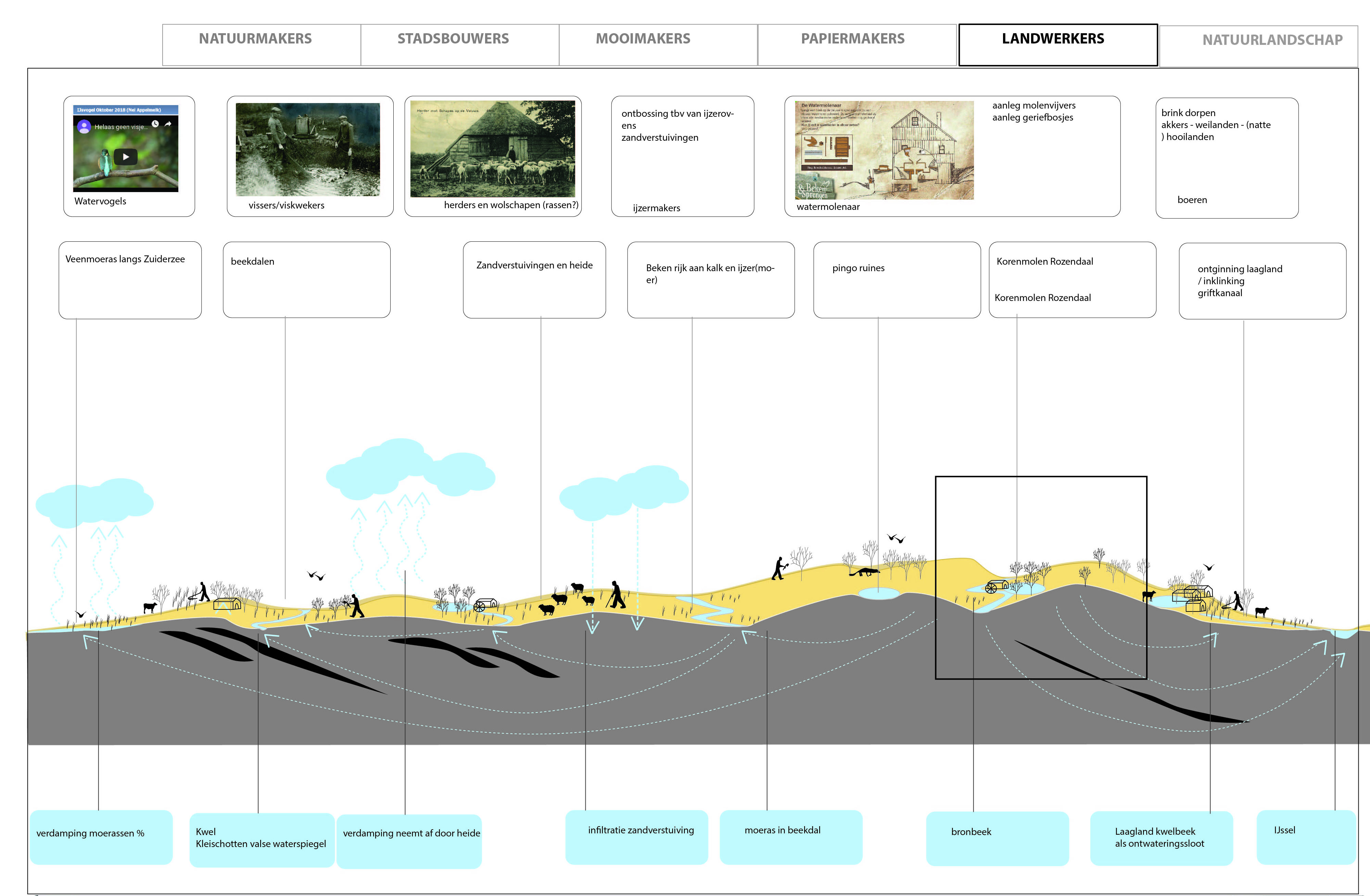Circular Water Stories
The management of water-living systems through time is slowly taken over by 'professionals.' The link that traditionally existed between communities and their water system was thus literally and figuratively cut. We have changed from communities of 'water workers' into passive spectators. Anonymous boxes have replaced drainage sluices that were once operated by hand. Only a few people still know the story behind the water system they see. Questions like what is it for, why is the water positioned here, where does it come from, etc. cannot be answered anymore.
Together with the stories, the community's involvement in water management is lost.The management of water-living systems through time is slowly taken over by 'professionals.' The link that traditionally existed between communities and their water system was thus literally and figuratively cut. We have changed from communities of 'water workers' into passive spectators. Anonymous boxes have replaced drainage sluices that were once operated by hand. Only a few people still know the story behind the water system they see. Questions like what is it for, why is the water positioned here, where does it come from, etc. cannot be answered anymore. Together with the stories, the community's involvement in water management is lost.
Even designers and researchers overlook the dynamic interaction between the communities and individuals who transformed and shaped their water systems. As a result, the crucial aspect of the interweaving of people and particularly sustainable Dutch water life systems, such as flow-pasture systems, polder-boezem systems, and tidal systems, remain underexposed.
Climate change and the awareness that we need to act circular to ensure the quality of life on this planet requires a shared commitment to live with water. The reporting of inspiring CIRCULAR WATER STORIES of 'water workers' can help to restore and renew the bond between humankind and water. Sustainable principles are uncovered that remain hidden in pure spatial analysis.
The CIRCULAR WATER STORIES team has developed a method for a blueprint/pilot for an interactive visual storytelling map. During the project, in consultation with the partners, we decided to focus on one water system: the Veluwse Sprengen and Beken system. By doing so, we could include many known aspects of a water system in one overall drawing. The developed method provides an integrated spatial view of the water system and includes its relation to the landscape, the management, the circularity, its use, its ecology in connection to the stories. The goal is that the revealed knowledge stimulates a more conscious understanding and application of existing water systems and input for the design of new living-water-systems.
Facts
| Funder: | NWO |
| Programme: | Kiem |
| Overall budget: | € 18.000 |
| Grant amount: | € 15.000 |
| Grant number: | KI.18.012 |
| Role TU Delft: | Lead partner |
| Project duration: | January 2019 - September 2019 |
| TU Delft researchers: | Dr.ir. Inge Bobbink |
Project partners
SL Studio, RCE, Uni van Waterschappen

